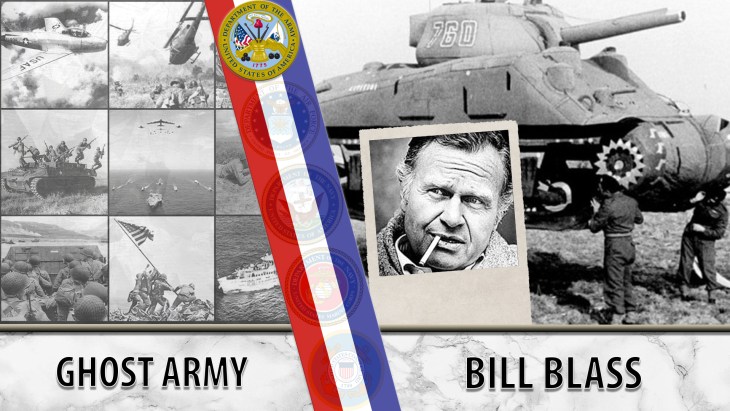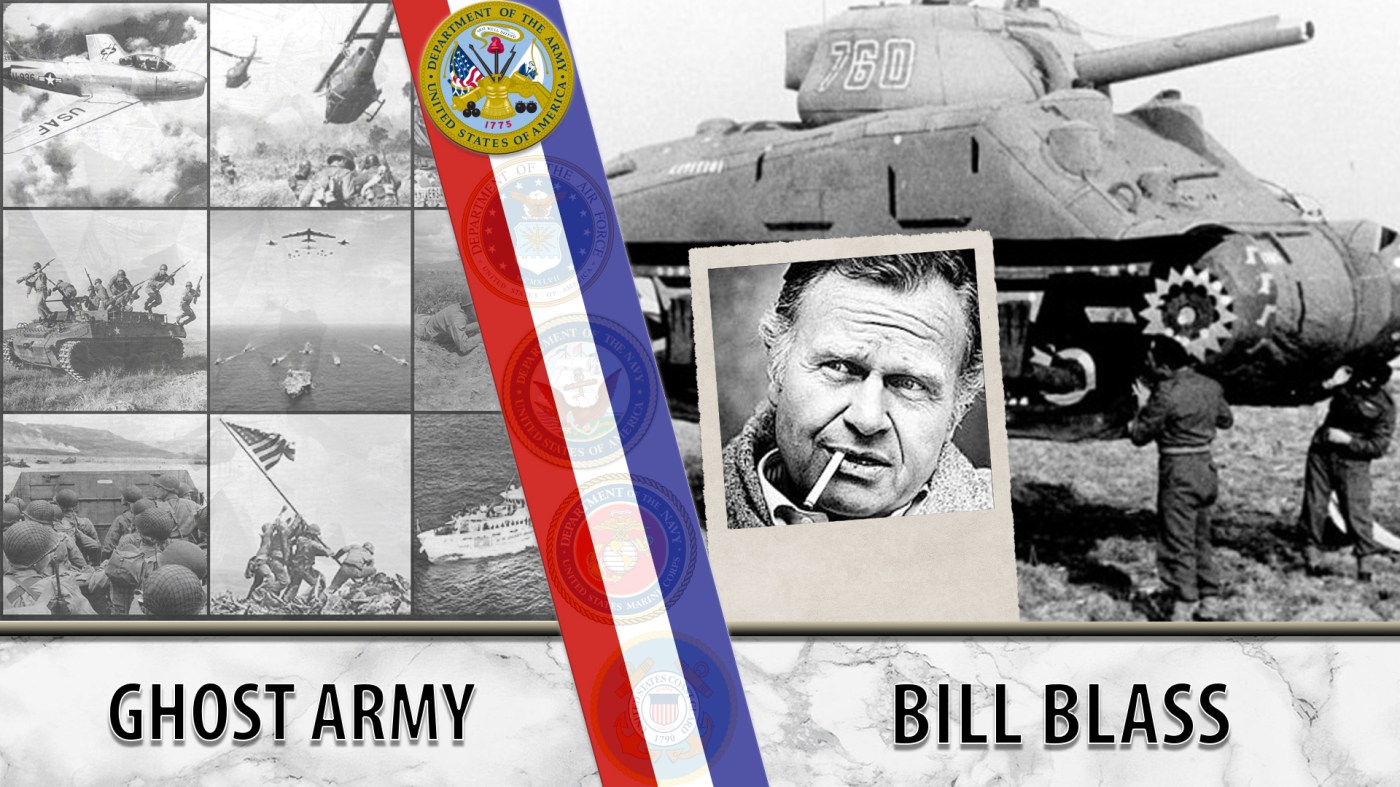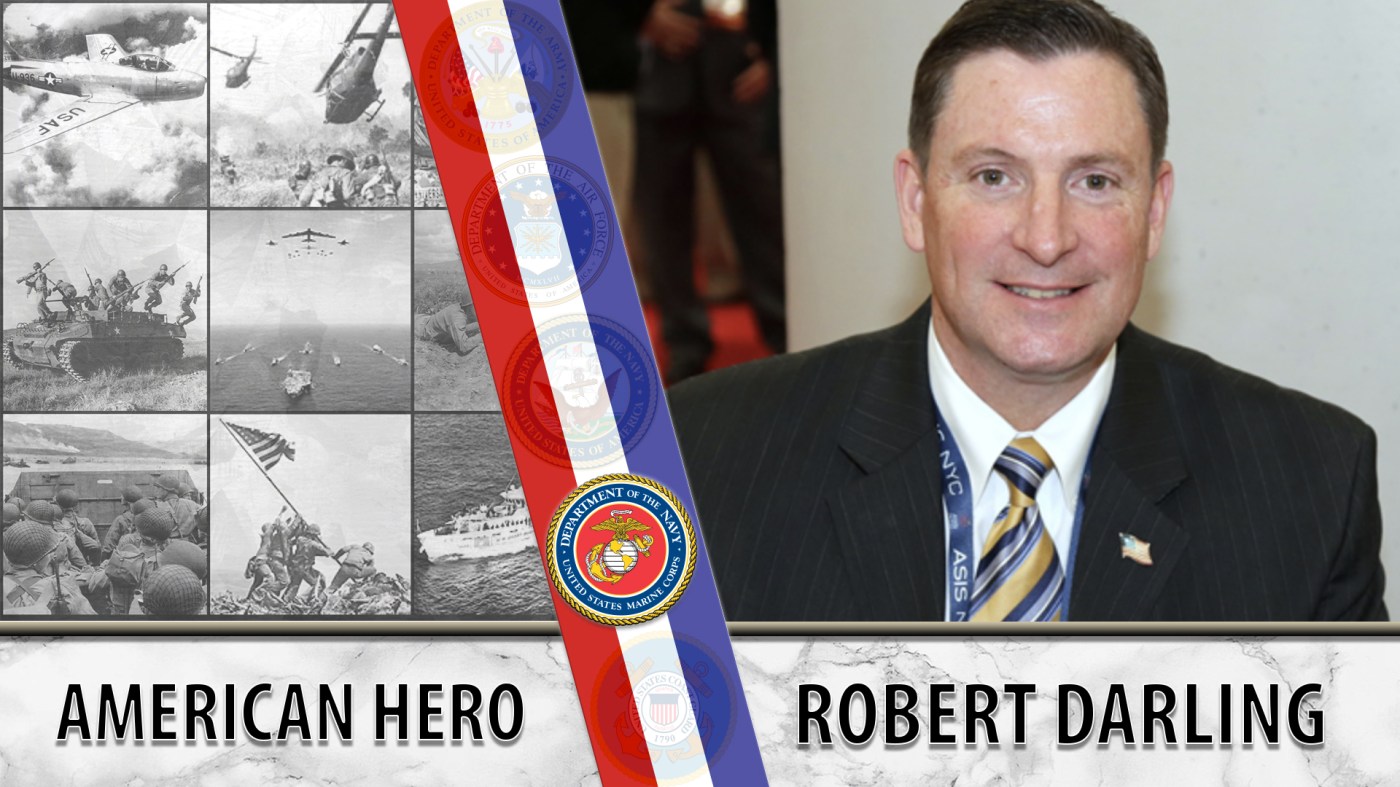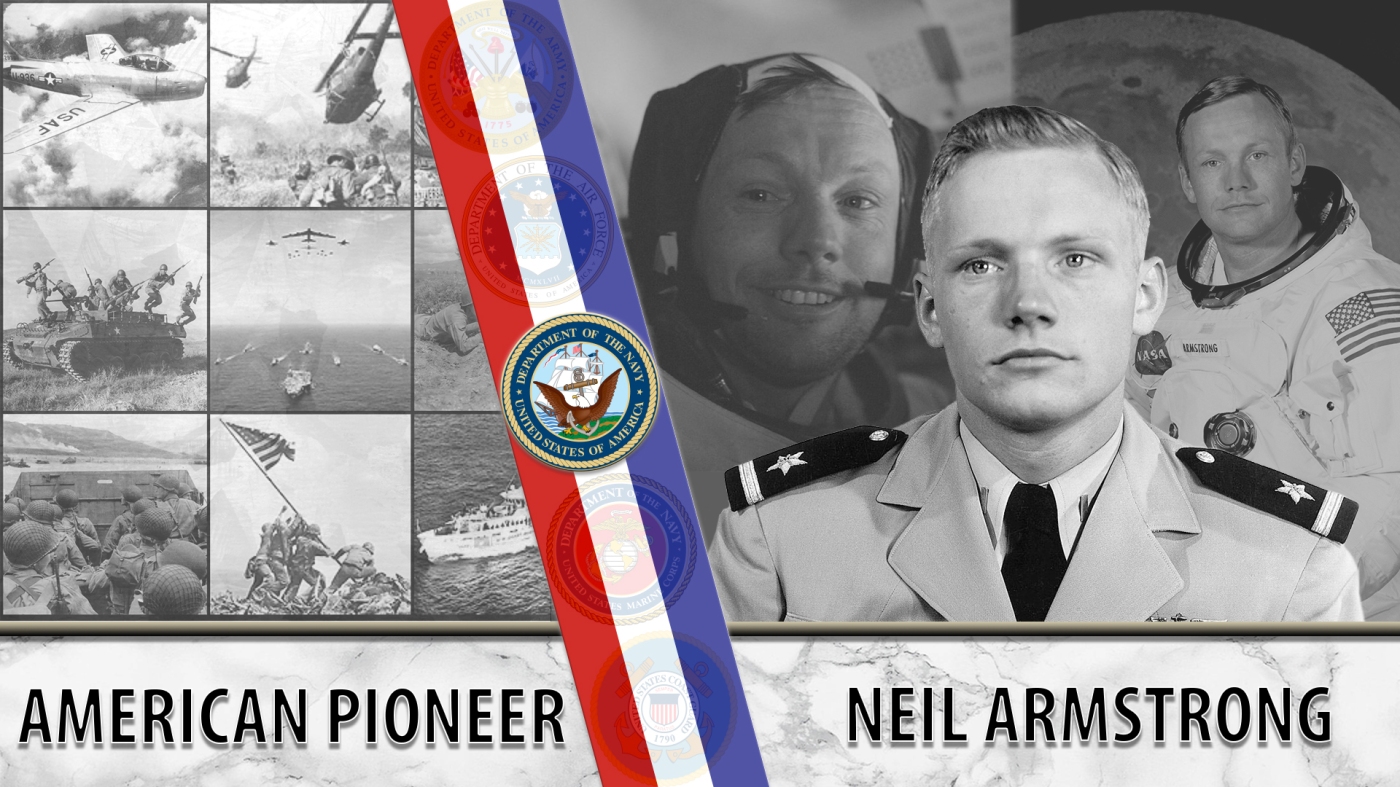
Bill Blass was a world-renowned fashion designer who put his career on hold to join the Ghost Army during WWII.
Bill Blass grew up in Fort Wayne, Indiana, in a humble home. His love for the fashion glamor and sophistication he saw in movies and magazines led him to dream big and create inspirational sketches and designs. After graduating high school, Blass moved to New York City and studied at the McDowell School of Fashion. He also worked as a sketch artist, selling designs to manufacturers in the Seventh Avenue garment district.
In 1942, Blass put his fashion design dreams on pause to enlist in the U.S. Army. He was assigned to the 603rd Camouflage Battalion and placed in the 23rd Headquarters Special Troops, also known as the Ghost Army. The Ghost Army consisted of a variety of bright and creative minds that could work together to utilize their talents to deceive the Nazis. Their efforts to fool the Nazis involved creating inflatable tanks, and using sound effects and manufacturing other ruses to simulate a large moving force of approximately 30,000 people. The Ghost Army operated on the frontlines in France, Belgium, Luxembourg and Germany, performing over 20 operations to distract the Nazis while other units approached.
The Ghost Army’s operations ended in 1945, and all the members left with an incredible story that they were not allowed to share until their actions were declassified in the 1990s. During his time in the Army, Blass continued sketching and sold designs for additional money, building up his name and portfolio. When speaking about his time in the Army, Blass shared, “For me, the three and a half years that I spent in the army represented absolute freedom. I was truly on my own for the first time in my life.”
After completing his service, Blass returned to New York City. He had a brief stint working for Anne Klein and then began to design for Anna Miller & Company. Upon Miller’s passing, her brother, Maurice Rentner, combined his sister’s firm with his own. Blass became the head designer and continued his work, eventually titling his designs, “Bill Blass for Maurice Rentner.” In 1958, Rentner died, and in 1970, Blass became the owner of the firm, renaming it “Bill Blass Limited.”
Blass’ style has had a lasting impact on fashion. He was known for his couture sportswear which “blurred the boundaries between day and evening wear.” His clothing was designed to be accessible and relaxed, allowing women to dress without assistance from a maid. But it was also designed to be formal and appropriate for a variety of occasions. While discussing his clothes, Blass said, “No woman can be well dressed unless she is comfortable in what she is wearing.”
Blass primarily designed women’s clothes but successfully branched into menswear couture in 1967. He also licensed a variety of products, connecting them to his name brand and label. While his couture shows lost money as years passed, his name brand brought in revenue due to the sales of his over 90 licenses.
Blass’ designs came to prominence at the same time designers began to step away from anonymity and into the public eye. He utilized his personality and good nature to build a persona to continue to sell his brand into society, becoming a “part of the world of the women who wore his clothes.” His clients included: Gloria Vanderbilt, Nancy Reagan, Barbara Walters and many other women seeking a classic and comfortable style. Additionally, Blass often traveled to his stores across the states and engaged with the different environments he was designing for, saying, “Black is a New York invention. But in bright, sunny cities like Houston and Los Angeles, black looks terrible.”
Throughout his career, Blass received the Council of Fashion Designers of America Lifetime Achievement Award in 1987, the Humanitarian Leadership award in 1996 and multiple Coty American Fashion Critics’ Awards. In 1973, Blass was also one of the few American designers welcomed to a show at the Palace of Versailles in an effort to raise the prominence of American fashion. He presented alongside five French designers and four fellow American designers, which included Anne Klein, Halston, Oscar de la Renta and Stephen Burrows. Additionally, the New York Public Library named the Public Catalog Room the “Bill Blass Public Catalog Room” in his honor, where he was a book lover, trustee and benefactor.
In 1999, Blass sold his company and retired to a more secluded life in Connecticut. He died in 2002 at the age of 79, after battling oral cancer. Blass’ story lives on through his designs, which will forever impact the fashion we know today.
Writer: Kimberly Kassis
Editors: Katherine Berman, Julia Pack
Researcher: Kelly Wun
Graphic Designer: Grace Yang
Topics in this story
More Stories
Bernie Webber led one of the greatest Coast Guard rescues in history that was later chronicled in the book and movie, “The Finest Hours.”
As the events of 9/11 unfolded, Marine Veteran Robert Darling served as a liaison between the Pentagon and Vice President Dick Cheney in the underground bunker at the White House.
NASA astronaut Neil Armstrong was the first person to walk on the moon. He was also a seasoned Naval aviator.






